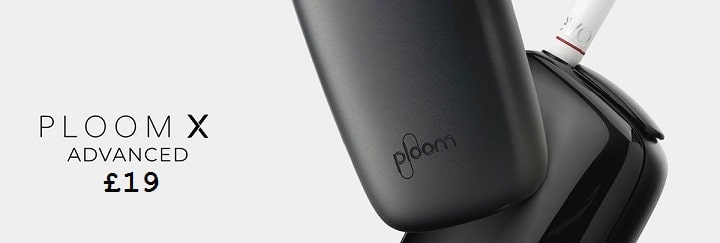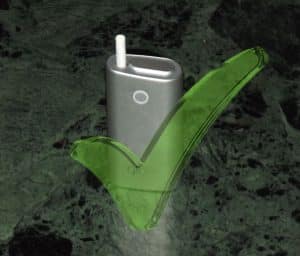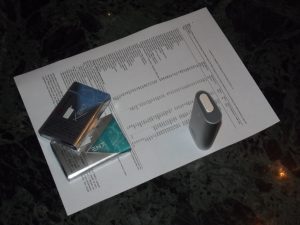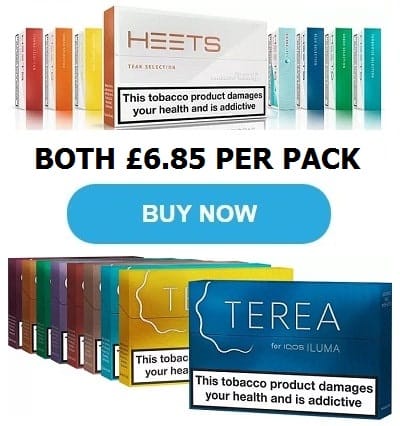
Over the last year we’ve seen a lot of progress for heat not burn products, with the iQOS heated tobacco device now available in several countries including right here on this website and a few new devices set to be released soon. The market looks like it could be on the brink of some serious growth, and within a few years HnB could have made as big a dent in smoking rates as e-cigarettes already have.
There’s one thing still missing, though. If heated tobacco products are really going to grab a sizable percentage of the cigarette market it’s important that their makers can show they’re safer than smoking. As we’ve mentioned before, common sense tells us they pretty much have to be a lot safer, because the tobacco isn’t being burned, but there’s a distinct lack of actual data. Isn’t anyone doing the research on this? It turns out the answer is yes.
Of course, you won’t see this research appearing in the medical journals just yet, because it’s actually being carried out on behalf of the tobacco industry. Philip Morris International have invested more time and money in HnB than anyone else, and a lot of that has gone towards looking into how much risk can be removed by switching from lit to heated tobacco. Some world-class laboratories have been asked to investigate how HnB is working and what that means in terms of health effects. Last week Heat not Burn UK got a chance to visit the Cube, PMI’s European research HQ at Neuchatel in Switzerland, to find out what’s going on.
How hot is too hot?
By now everybody knows that smoking-related diseases aren’t caused by tobacco; it’s the combustion process that creates the worst toxins and cancer-causing substances. Tobacco-free herbal cigarettes aren’t any better for you than Benson & Hedges, because you’re still inhaling burning plants. However, PMI have found out that making a safe HnB product isn’t as simple as not setting fire to the tobacco.
The tip of a lit cigarette, between puffs, is at between 600°C and 800°C; when you take a drag on it this rises to over 900°C. That’s the sort of temperature tobacco burns at. However, at much lower temperatures it goes through a process called pyrolysis, where it’s being broken down by heat but not actually burning. Pyrolysis starts at around 350°C, much lower than combustion temperatures – and pyrolyzing tobacco still gives off a lot of nasty chemicals. Not as much as burning it, of course, but probably still more than you really want to be inhaling.
So the trick to safe HnB is to heat the tobacco to just below the point where pyrolysis begins. If you were wondering why iQOS heats its sticks to 350°C when tobacco doesn’t start burning until hundreds of degrees above this temperature, now you know. PMI have opted for the highest safe temperature, where there’s little or no pyrolysis going on but the tobacco is still hot enough to generate a decent vapour. Because HnB products like iQOS, Glo and PAX 2 are electronically controlled it’s easy to get them to produce a constant temperature and avoid pyrolyzing or burning the tobacco.
Tracking the toxins
Obviously the big question is, what effect does heated tobacco have on the levels of chemicals you’re inhaling? It’s unrealistic to insist on zero chemicals, because many of the toxins in cigarette smoke are very common substances. For example, smoke contains high levels of formaldehyde – but human bodies contain formaldehyde, too. Our metabolism produces it, and there are detectable levels of it in exhaled breath. What we’re looking for are levels that might not be zero, but are much lower than you’d get from a cigarette.
To test this, PMI analysed the smoke from a reference cigarette – this is a standardised cigarette used for lab testing – then compared it with the vapour from their two HnB products. One of these is iQOS; the other, known as Platform 2, hasn’t been released yet but works in a different way. What they found was that for every chemical they tested, levels were dramatically reduced in both HnB products. The highest levels were for ammonia, with iQOS having about half the level of a cigarette and Platform 2 around 40%. Is that enough to worry about? No; even cigarette smoke doesn’t have anywhere near enough ammonia to be an issue. For the other chemicals they tested levels were reduced by at least 80%, and in most cases 90 to 95%. Overall it looks like HnB eliminates more than 90% of the harmful chemicals found in cigarette smoke.
One impressive point about PMI’s research is that they’ve been extremely thorough. Different agencies have different lists of chemicals in smoke that concern them. For example the FDA have a list of 28 different substances; the International Agency for Research on Cancer’s list has fifteen. To be on the safe side, Philip Morris have simply combined everyone else’s lists; they test for fifty-eight different chemicals – far more than anyone else does.
Attention to detail
PMI aren’t just measuring what’s in the vapour; they’re also testing smokers who’ve switched to their HnB products to see how they compare with people who’ve either quit entirely or continued to smoke. What they’re doing here is looking to see if switchers’ blood chemistry is more like a smoker or a quitter. For every chemical they’ve tested – including carbon monoxide, benzene and acrolein – HnB users either have identical levels to smokers who’ve quit entirely or (for acrolein) the level is slightly higher than a quitter but much lower than a smoker.
At Heat not Burn UK we might not be scientists, but we do know how science is supposed to be done. The research that’s being carried out on the health effects of HnB is very good science. It’s extremely thorough and detailed. The actual analysis is being carried out by independent labs, which should deal with any accusations of bias. PMI are being completely open about the experimental methods, so anybody who has doubts can replicate the research themselves.
Why so modest?
That leaves one question: With all this research to back them up, why aren’t PMI shouting from the rooftops about how safe heated tobacco really is? Most likely that’s down to an understandable wariness of being sued. If they say that iQOS is 90% safer than smoking, and then at some point in the future evidence shows it’s only 89.9% safer, how long is it going to be until swarms of Californian lawyers descend on them with a fistful of class action suits? Not long, probably.
So, for now, they’re playing a cautious game. The data is there, and steadily growing. Sooner or later it will be presented to some government agency, probably the FDA, and they’ll confirm that these products are much safer than smoking. That’s when the manufacturers will start publicising it. Until then we’re just going to have to rely on common sense.












[…] Those were not as satisfying as they could have been, but did prove the concept. Happily, during our visit to PMI’s research centre at Neuchatel a couple of months ago there was no shortage of them in all […]